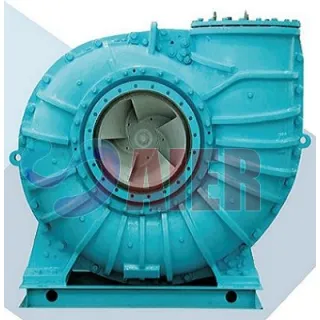Sep . 06, 2024 08:57 Back to list
High-Performance Ceramic Slurry Pump for Efficient Slurry Handling
Understanding Ceramic Slurry Pumps
Ceramic slurry pumps are specialized pumps designed for the transportation of abrasive and corrosive materials, typically found in industries such as mining, mineral processing, and ceramics manufacturing. The unique construction and materials used in ceramic slurry pumps confer a range of benefits that make them particularly effective for handling challenging materials such as slurries, which can often be a mixture of solids and liquids.
Composition and Design
The key feature of ceramic slurry pumps is their construction. Unlike traditional pumps that might use metals or plastics that wear out quickly, ceramic slurry pumps utilize high-performance ceramics for their wet end components. These materials are engineered to withstand the severe erosion and corrosion that can occur when pumping slurries. The ceramic components are highly resistant to wear, extending the life of the pump and reducing maintenance costs.
Ceramic slurry pumps often feature a centrifugal design, which is effective for creating the flow necessary for transporting slurries over long distances. The impellers and volutes of these pumps are designed to maximize flow efficiency, ensuring that the slurry can be moved without excessive energy consumption. This efficiency is crucial in industrial applications where both operational costs and environmental impact are significant considerations.
Advantages of Ceramic Slurry Pumps
One of the main advantages of ceramic slurry pumps is their durability
. The ceramic materials are not only resistant to wear but also to many chemicals, which means these pumps can handle different types of slurries, including those that contain aggressive substances. This versatility allows industries to use a single type of pump for various applications, simplifying inventory and maintenance.ceramic slurry pump

Another advantage is the reduced downtime associated with ceramic slurry pumps. Since these pumps require less frequent repairs or replacements, operational efficiency is improved. This is particularly important in industries like mining, where downtime can result in significant financial losses. By investing in ceramic slurry pumps, companies can achieve higher uptime and productivity.
Additionally, the smooth surfaces of ceramic components help reduce friction, which can further enhance the efficiency of the pump operation. This is vital in minimizing energy consumption, which is not only cost-effective but also environmentally friendly.
Application Areas
Ceramic slurry pumps find applications across various sectors. In mining, they are used to transport tailings – the waste material left over after the extraction of minerals. In the ceramics industry, they are used to move clay mixtures and other abrasive materials. Furthermore, these pumps are utilized in wastewater treatment plants, where the solid content can be high and abrasive materials are present.
Conclusion
The use of ceramic slurry pumps represents a significant advancement in pumping technology, particularly for industries that require reliable, efficient, and long-lasting solutions for handling abrasive slurries. Their ability to withstand harsh conditions while minimizing downtime and maintenance costs makes them an excellent choice for industrial applications. As technology continues to evolve, ceramic slurry pumps are expected to play an even more integral role in maximizing efficiency and productivity across numerous sectors, contributing to the overall advancement of industrial processes.
-
Top Submersible Pump Companies High Quality Manufacturers & Suppliers in China
NewsJul.08,2025
-
High Quality Seal for 5 Inch Dredge Pump Reliable China Manufacturer & Supplier
NewsJul.08,2025
-
High-Efficiency Slurry Sand Pump from Leading China Manufacturer – Durable & Reliable Solutions
NewsJul.07,2025
-
High-Quality Slurry Pump Made in China Durable Steel Mill Slurry Pump & Parts
NewsJul.07,2025
-
High Quality Excavator Dredge Pump Manufacturer & Suppliers from China – Reliable, Durable, Efficient Solutions
NewsJul.07,2025
-
Wholesale Slurry Pump Closed Impeller Supplier High Efficiency China Slurry Pump Closed Impeller
NewsJul.06,2025
